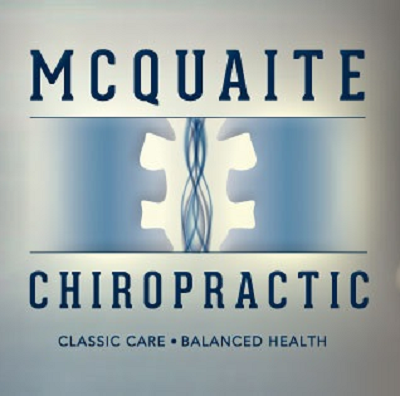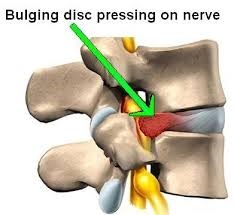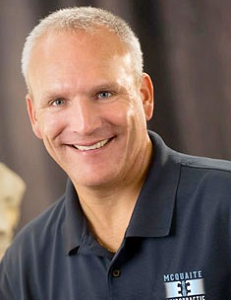You can have a herniated disc and not even know it. That’s because the symptoms can be in your leg, foot or other body part that doesn’t seem related. Of course, all of your body’s movements are related to your spine in some manner so it is related.
You can have a herniated disc in your lower back or your neck area. Here are some common symptoms.
The most common signs for a herniated disc in the lower back (lumbar) are:
- Leg pain – Some refer to this as “sciatica”. You may also experience “foot drop” (pain in ankle, weakness when raising the big toe).
- You may also experience the radiation of pain down the sole of your foot and outside the foot.
The most common signs for a herniated disc in the neck (cervical region) are:
- Weakness in the deltoid muscle in the upper arm or shoulder pain.
- Weakness in biceps in the front of upper arm and wrist extensor muscles. This can be actual pain or “tingling” radiating to thumb side of the hand.
- Weakness in triceps in back of upper arm to forearm and extensor muscles of fingers.
- You may also experience pain, numbness or weakness when gripping with the hand down arm to little finger side of hand.
What exactly is a herniated disc?
The problem occurs with one of the rubbery cushions (discs) between the individual bones (vertebrae). This spinal disc has a “jelly” like interior (nucleus pulpous) and a tougher exterior (annulus fibrosis). A slipped/ruptured disc is when the softer middle pushes out through a crack in the tougher exterior. This irritates surrounding nerves causing pain.
The process happens in four stages:
- Disc degeneration – The disc is starting to dry out and is less able to absorb shock of movements.
- Prolapse – The form and position of the disc changes causing a slight bulge to begin to form.
- Extrusion – The jelly like nucleus breaks through.
- Sequestration – The nucleus pulposus breaks through and moves outside the disc in the spinal canal.
The causes of a herniated disc are not always the result of a tragic accident, but are commonly a result of the following:
- Most often result from gradual, age-related wear and tear.
- Lifting with back muscles instead of leg/thigh muscles.
- Twisting/turning while lifting.
- Subluxation – One or more of the bones of your spine move out of position.
Risk factors for herniated disc conditions:
- Age – Usually seen between 35 and 45 with 35% appearing in males and 45% in females.
- Weight – Being overweight strains your body.
- Occupation – Those with physically demanding jobs, repetitive lifting, pulling or pushing and bending sideways/twisting are most at risk.
So…can your chiropractor help you with your herniated disc? Yes! Chiropractors are the only healthcare professionals with years of training to specifically address this type condition. They are trained to locate, reduce or correct subluxations by decompressing the vertebrae allowing the disc to heal itself without medications or surgery.
On initial examination, your Chiropractor will look for intact reflexes, loss of muscle strength and/or signs of muscle wasting, and loss of sensation along the path of the nerve. Diagnostic methods such as x-ray or MRI can determine some of this. The chiropractor will also conduct a complete spinal evaluation and careful exam of posture.
Some of the options for treatment are:
- Spinal manipulation – Gentle/Low force techniques such as Flexion Distraction or Pelvic Blocking.
- Manual Therapy – Ice and or ultrasound in the initial phase as well as guarded stretching exercises.
- Therapeutic exercises
- Decompression (traction)
- Back brace specially fitted to address the injured area
- Supplements to replace the lost glucose amino chondroitin
With either some or all of the above, a herniated disc takes approximately 12 weeks to heal.


